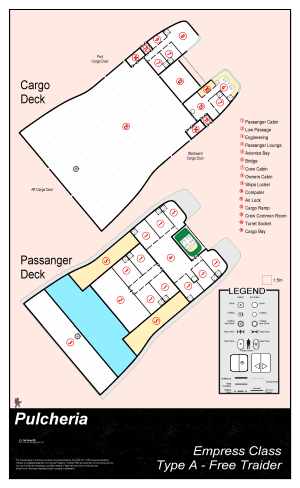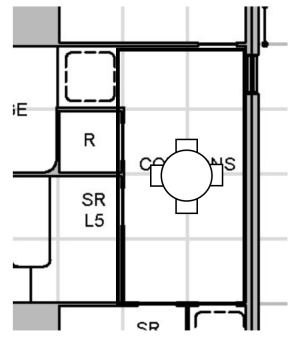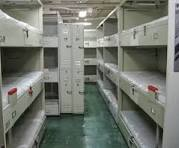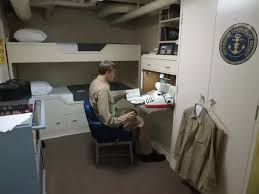* Should a deck plan have large machinery in the engineer spaces or is a note that this room is engineering good enough?
Depends on the resources you have available to you.
It also depends on the purpose you want to put the deck plans into use for.
Substantially, the point and purpose of deck plans (and the detail level in them) is to make "infantry action" and sight lines for exchanging fires something that makes the job of the Referee easier.
You can TOTALLY abstract things and just draw "empty" compartments if you want. A LOT of the early CT deck plans did precisely this. Even when the "contents" of compartments were ... detailed ... the details were exceptionally sparse and more just there to "hint" at what might be occupying the interior spaces.
LBB A1, p20-21:
As you can see, even in this VERY EARLY publication for CT, labels are kind of "whatever fits the available space" and the machinery spaces for the drives are ... really abstract. Everything else is just walls and doors to partition interior spaces. It's all very simplified and Theater Of The Mind™ type stuff.
* Should a deck plan have large machinery in the engineer spaces or is a note that this room is engineering good enough?
Just labeling a room as "engineering" will often times be "good enough" to get the idea across.
Having the resources available to fill up the "engineering" compartment spaces with machinery helps with immersion and gives a better "feel" for how the contents of the compartment are apportioned. The downside is that things get ... less abstract ... the more detailed and defined you a make them.
If you'll forgive me for tooting my own horn about a deck plan design that I've since abandoned (due to redesigning the naval architect's office spreadsheet particulars), there's this image that I posted in my own research thread (
#116):
A quick
compare & contrast with the earlier LBB A1 deck plans for the Kinunir posted above shows just HOW DIFFERENT things can get when you aren't just abstractly labeling compartment spaces and are instead aiming for more of a "lived in immersion" level of deck plan detail. However, that
heightened sense of realism/immersion that results of increased levels of detailing add a lot of value to the work of deck plans, if you can "afford" to reach for those detailed improvements.
Spoiler alert: I'm still fiddling with the naval architect's office spreadsheet details of the (now) two related starship classes I want to define and build. You can take my
Pondering Starship Evolution thread as something of an "open book research" on how to design starships and then craft the deck plans to "fit" what the spreadsheet numbers ought to "mean" when built out into a (working) starship design.
* How about the Low Berth room? a note or filed with symbols?
Either will work, but actually SEEING how the low berths are laid out in the floor plan gives you a better sense of what someone walking into the room would encounter (and where the sight lines are within the compartment).
For example:
Here's how I designed a possible deck plan for a 20 ton Box filled with 40 low berths (Post
#345).
Obviously, the "walkable area" within each compartment of 10 low berths is ... cramped ... but it's possible to sidestep shuffle your way around in those tight spaces. Fortunately, the "occupants" of the compartments tend to "not need a whole lot of living space" so having these cramped access walkways inside each compartment works out just fine.
* Is a deck plan better with a numbered key or with labels?
Labels if there's room for them, numbers if not.
I personally do an "interiors decorated" version ... and then copy the original image and take out most of the lettering labels so as to do a number system for each compartment. I then do an accounting of each individual compartment, by numbers, in text, so as to provide additional writing detail for the contents and purpose of each compartment.
It's a lot of additional WORK to do it that way, but you wind up with a much more polished final product which is more satisfying to return to as a point of reference in the future.

If you too want to make use of Traveller Geomporphs as a source of "common visual language components" to populate your deck plans with, I recommend
THIS LINK.









